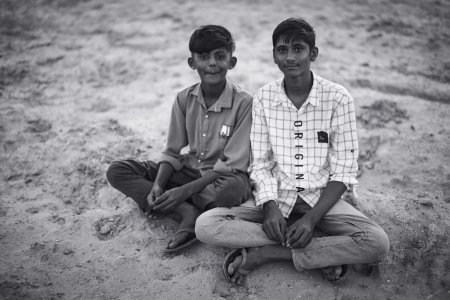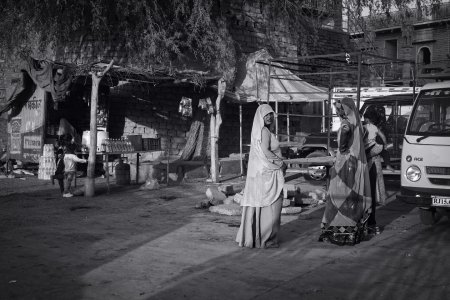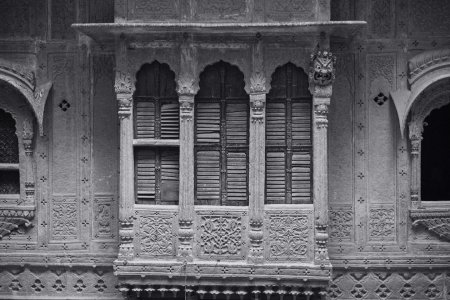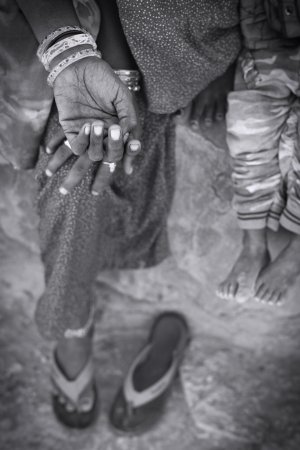rhl-oregon
Cameras Guitars Wonders
Fabulous body of work for such a short time, and such a helpful guidebook on how to do this generously and ethically.
I've been away for months; this is one of the first threads I opened, and I feel refreshed, inspired, and full of admiration for what you are doing and have done.
I've been away for months; this is one of the first threads I opened, and I feel refreshed, inspired, and full of admiration for what you are doing and have done.
Freakscene
Obscure member
Wow, thank you, that’s a real boost, appreciated.Fabulous body of work for such a short time, and such a helpful guidebook on how to do this generously and ethically.
I've been away for months; this is one of the first threads I opened, and I feel refreshed, inspired, and full of admiration for what you are doing and have done.
I am really motivated to show how people live, but when working with people who don’t have much, the ethical implications, to me, are incredibly important. The framework in which I do this is probably personally more important than the output, so I really appreciate you noticing and commenting. I just ordered some prints for the people depicted in these photos, so that’s my next step towards giving them something for letting me in for a while.
Freakscene
Obscure member
rhl-oregon
Cameras Guitars Wonders
Prints: affirmative on that.
(In the last project I did with institutional support & numerous folks in several communities who permitted me to photograph them, my last task was to find as many as I could and give them signed sleeved prints on 8x12 Hahnemule rag, and my calling card.)
(In the last project I did with institutional support & numerous folks in several communities who permitted me to photograph them, my last task was to find as many as I could and give them signed sleeved prints on 8x12 Hahnemule rag, and my calling card.)
Freakscene
Obscure member
I’m giving them 6x8 prints on Fuji Crystal archive for colour phone photos and 6x9s on Ilford RC for the B&Ws. This trip was, how can I put it? Unsupported…Prints: affirmative on that.
(In the last project I did with institutional support & numerous folks in several communities who permitted me to photograph them, my last task was to find as many as I could and give them signed sleeved prints on 8x12 Hahnemule rag, and my calling card.)
Freakscene
Obscure member
DownUnder
Nikon Nomad
G'day from a (very) latecomer to this thread.
I wonder how I missed it for so long. 2023 has been a good year for travel on RFF. All these wonderful journeys our members have taken, and are now taking the time and making the effort (= sanning) to share with us.
So many of your images have a HCB element to them. I have several Cartier-Bresson prints of images he took in India in the 1940s, and they and yours have so many amazing similarities. Obviously another case of two great minds thinking and photographing alike...
I'm greatly enjoying the images, but I am also madly curious about what equipment you used to capture these images. One camera and one lens only? Or an arsenal of gear?
Please share a few technical details with us, and put at least one of us (= me) out of our curious misery!
I wonder how I missed it for so long. 2023 has been a good year for travel on RFF. All these wonderful journeys our members have taken, and are now taking the time and making the effort (= sanning) to share with us.
So many of your images have a HCB element to them. I have several Cartier-Bresson prints of images he took in India in the 1940s, and they and yours have so many amazing similarities. Obviously another case of two great minds thinking and photographing alike...
I'm greatly enjoying the images, but I am also madly curious about what equipment you used to capture these images. One camera and one lens only? Or an arsenal of gear?
Please share a few technical details with us, and put at least one of us (= me) out of our curious misery!
Freakscene
Obscure member
G'day from a (very) latecomer to this thread.
I wonder how I missed it for so long. 2023 has been a good year for travel on RFF. All these wonderful journeys our members have taken, and are now taking the time and making the effort (= sanning) to share with us.
So many of your images have a HCB element to them. I have several Cartier-Bresson prints of images he took in India in the 1940s, and they and yours have so many amazing similarities. Obviously another case of two great minds thinking and photographing alike...
I'm greatly enjoying the images, but I am also madly curious about what equipment you used to capture these images. One camera and one lens only? Or an arsenal of gear?
Please share a few technical details with us, and put at least one of us (= me) out of our curious misery!
Thanks for your kind comments. Having seen the Cartier-Bresson archive I know I’ll never approach his output volume, let alone the quality of the best ones, but I can try.
I took a Leica M10 Monochrom, a Leica M11 Monochrom and 28mm and 50mm Summiluxes, and a 75mm Summicron that I didn’t end up using. I also took a Pentax K-3 iii Monochrome with 15, 21, 35 and 70mm HD lenses as backup, but only ended up using it when all my Leica batteries (M11x2 and M10x3) were flat. I had yellow and red filters for the lenses. I only used the yellow a few times. I also took my iPhone.
Of the photos that you see here, the normal angle ones are taken with the 50 Summilux and the wide ones are taken with the 28 Summilux. At web sizes there is no functional difference between photos from the M10 and M11. One photo I’ll post later is from the Pentax. They are minimally processed using Lightroom, mostly just a little mask selection and dodging/burning. Pretty much the same as I’d have done in the darkroom with film photos.
I don’t really think too much about gear anymore, I mostly think about taking photos.
DownUnder
Nikon Nomad
Thanks for your kind comments. Having seen the Cartier-Bresson archive I know I’ll never approach his output volume, let alone the quality of the best ones, but I can try.
I took a Leica M10 Monochrom, a Leica M11 Monochrom and 28mm and 50mm Summiluxes, and a 75mm Summicron that I didn’t end up using. I also took a Pentax K-3 iii Monochrome with 15, 21, 35 and 70mm HD lenses as backup, but only ended up using it when all my Leica batteries (M11x2 and M10x3) were flat. I had yellow and red filters for the lenses. I only used the yellow a few times. I also took my iPhone.
Of the photos that you see here, the normal angle ones are taken with the 50 Summilux and the wide ones are taken with the 28 Summilux. At web sizes there is no functional difference between photos from the M10 and M11. One photo I’ll post later is from the Pentax. They are minimally processed using Lightroom, mostly just a little mask selection and dodging/burning. Pretty much the same as I’d have done in the darkroom with film photos.
I don’t really think too much about gear anymore, I mostly think about taking photos.
Jeez! The insurance for that gear must have cost you as much as the airfare... 👹
(Just out of idle curiosity - did you buy all your great Leicas from John or from Alan and Venus? Or from that amazing shop off Collins Street I'm sure you know the one I mean...)
Freakscene
Obscure member
I bought the cameras at PhotoCo in the Central Markets in Adelaide. The lenses were bought used from there except the 50mm which came from KEH.Jeez! The insurance for that gear must have cost you as much as the airfare... 👹
(Just out of idle curiosity - did you buy all your great Leicas from John or from Alan and Venus? Or from that amazing shop off Collins Street I'm sure you know the one I mean...)
I have them insured as portables on our home insurance. It is somewhat costly. But I wouldn’t risk having to replace it all at once at new prices.
Freakscene
Obscure member
Freakscene
Obscure member
Ko.Fe.
Lenses 35/21 Gears 46/20
They are old or neglected.
Rayt
Nonplayer Character
My friends and colleagues in Delhi said blockage of the digestive track caused by eating plastic bags when people dump their rubbish onto the streets make up 40% of all urban oxen deaths. I thought that was interesting. Holy does not necessarily mean cared for or tolerated.
Freakscene
Obscure member
They are old. And despite being greatly revered and loved, they do have a tough life, living in an urban environment and living off hand-outs. But most cattle produced in western societies are over-fed and kept overweight to maximise carcass weight or milk production. Bos indicus cattle like these are also generally thinner than Bos taurus cattle we mostly have in the west.They are old or neglected.
They are completely tolerated. They have right of way on the road and are greatly revered. Cared for is another thing. They do access rubbish a lot. In most cities there are volunteer veterinarians who treat animals with an impacted gut from eating plastic, and their welfare is improving over time.My friends and colleagues in Delhi said blockage of the digestive track caused by eating plastic bags when people dump their rubbish onto the streets make up 40% of all urban oxen deaths. I thought that was interesting. Holy does not necessarily mean cared for or tolerated.
Last edited:
raid
Dad Photographer
Well done, Marty. This is impressive work. Very nice.
Freakscene
Obscure member
Freakscene
Obscure member
Freakscene
Obscure member
As a guide to processing, look here:They are minimally processed using Lightroom, mostly just a little mask selection and dodging/burning. Pretty much the same as I’d have done in the darkroom with film photos.

Darkroom Prints
Magnum Darkroom Prints reveal an analog history — how depth and layers are accentuated through the printing process and how the subject is brought to life. They are also a testimony to the eye of the printer and the magic of the darkroom. Featuring the marks and inscriptions by Magnum master...
 www.magnumphotos.com
www.magnumphotos.com
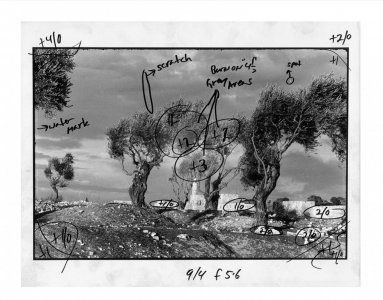 Dennis Stock’s photo of James Dean would have been a little complex in the darkroom, but the others are mostly quite simple. In general, for 35mm film capture tones with detail wherever you need it - the old expose for the shadows develop for the highlights/contrast works well. For digital, shoot raw and avoid blown highlights anywhere except in small specular bright areas. You’ll have a relatively flat negative or raw file. Think about how you want it to look. For digital, make a mask that covers most of the photo you want to edit - for scenes, Lightroom’s select sky > duplicate and invert works well. You can work on the sky separately later. Work on the main part of the file, then refine the details. Don’t be scared to do as much as is needed - when you see, your eyes accommodate luminosities and create a lot of tonality that isn’t really there, not to a camera with no brain anyway.
Dennis Stock’s photo of James Dean would have been a little complex in the darkroom, but the others are mostly quite simple. In general, for 35mm film capture tones with detail wherever you need it - the old expose for the shadows develop for the highlights/contrast works well. For digital, shoot raw and avoid blown highlights anywhere except in small specular bright areas. You’ll have a relatively flat negative or raw file. Think about how you want it to look. For digital, make a mask that covers most of the photo you want to edit - for scenes, Lightroom’s select sky > duplicate and invert works well. You can work on the sky separately later. Work on the main part of the file, then refine the details. Don’t be scared to do as much as is needed - when you see, your eyes accommodate luminosities and create a lot of tonality that isn’t really there, not to a camera with no brain anyway.Looking at good photos, well printed, helps a lot.
And if you like the no manipulation look, do what Erik does. He has explained how that works for analogue elsewhere on this site. For digital, just apply minimal changes and stick to adjusting only large areas of the raw files.
Last edited:
Freakscene
Obscure member
Share:
-
This site uses cookies to help personalise content, tailor your experience and to keep you logged in if you register.
By continuing to use this site, you are consenting to our use of cookies.

